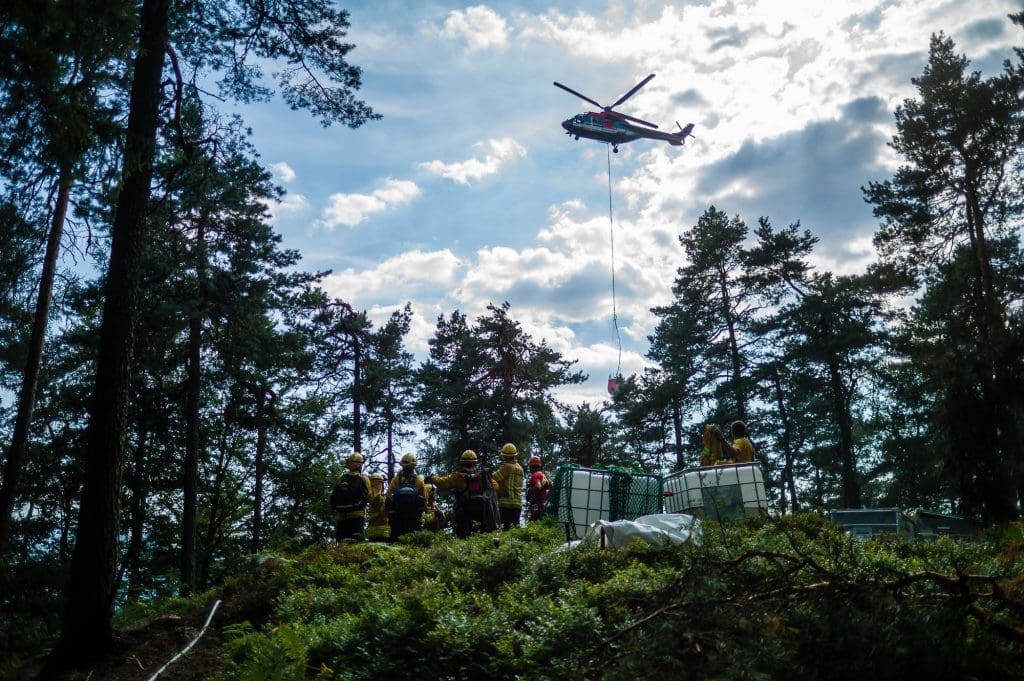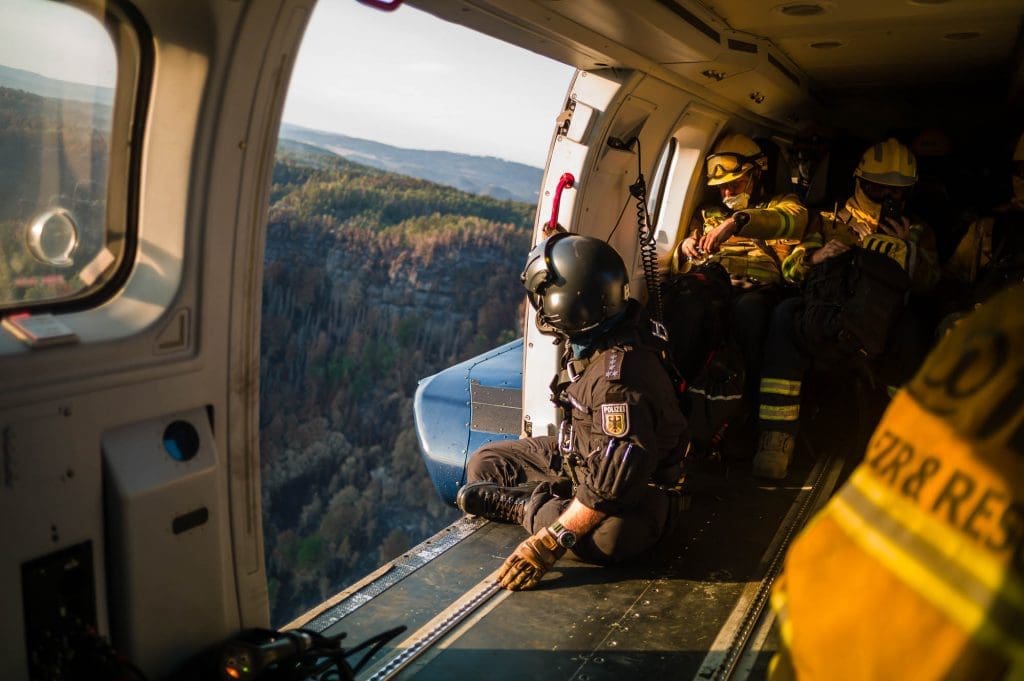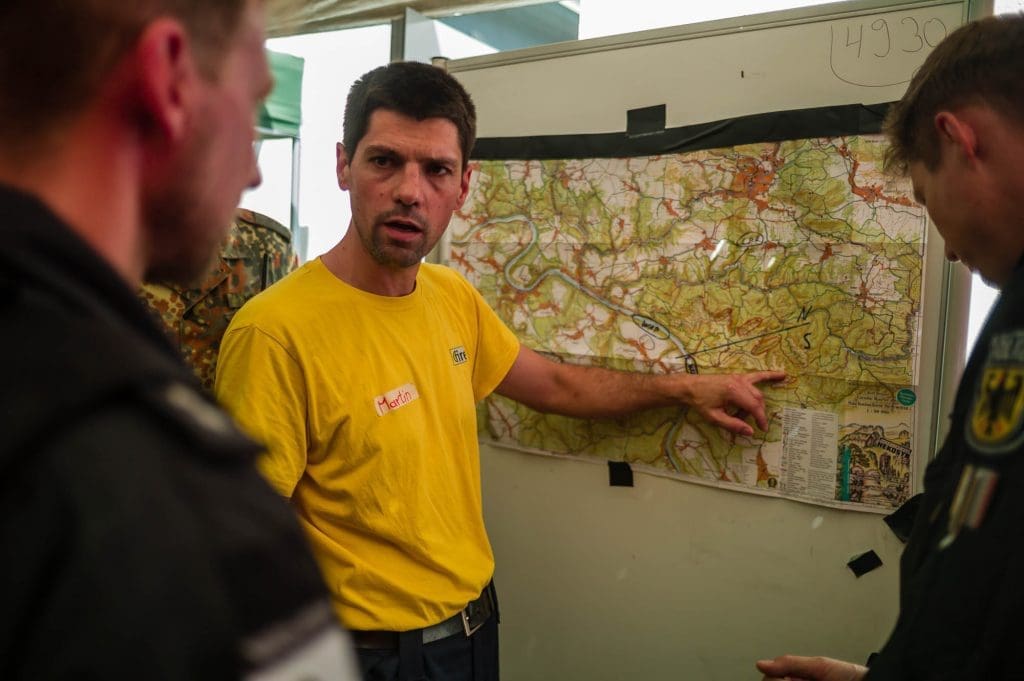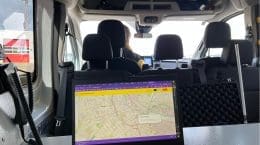The experiences from the forest fires in the Harz mountains and in Saxon Switzerland, but also from other past large forest fires, show us that the versatile use of helicopters and aircraft for fire-fighting water drops, reconnaissance flights or load and personnel transports must be well coordinated.
To support the emergency forces on site, @atfire has specialists who can support the on-site command in this task. In addition to a specialist air advisor, who provides advice to the operational command, @atfire also has the resources to provide an “Air Operational Support Team”, which can support or operate an operational section command air.
Various special forces are deployed with our units. The section leader air is responsible for the section. He creates the situation picture and takes over the communication between the various units, the planning for safety on the landing site, medical care, the water collection point and the need for resources for the following day.
An air coordinator is on board a helicopter whose task is to prioritise the drops and gather information, including via the helicopter’s thermal imaging camera, and pass it on to the emergency forces on the ground.
The landing site transport manager is responsible for documenting all passenger and material transports, ensuring sufficient fuel and coordinating the supply of the flight crews.
In addition, tactical throw-off coordinators (TAK’s) are used on the floor.
Their task is to brief the aircraft accurately and ensure that ground forces are not hit and that fire-fighting water can be dropped in a more targeted manner.
He also receives the information from the ground forces where drops are needed and takes care of the load work in the operational area.
An @fire alarm is issued via the central telephone hotline. A manager can be reached 24 hours a day and is available to answer questions and queries: +49 (0) 800 7777 111








